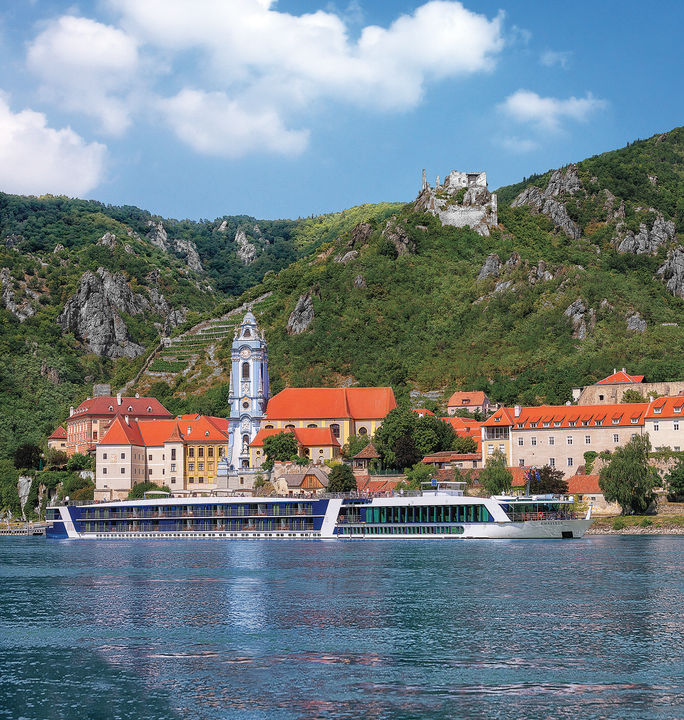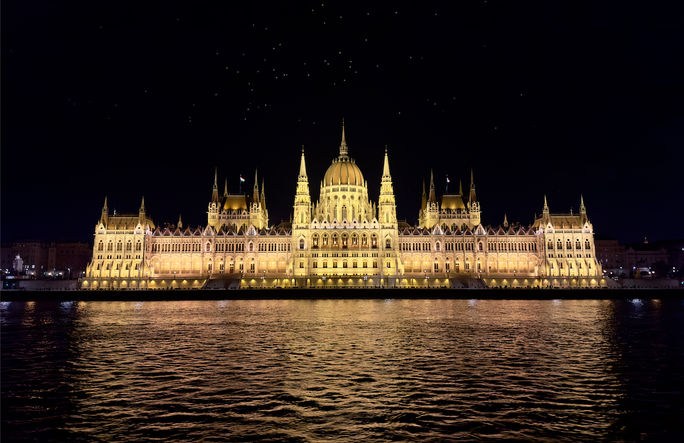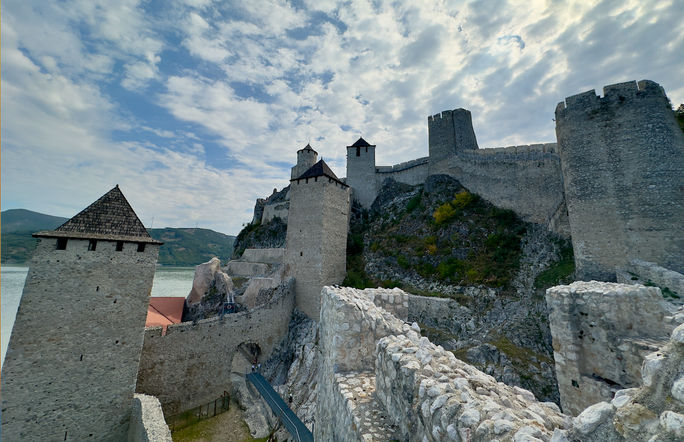
by Scott Laird
Last updated: 8:00 AM ET, Sun January 19, 2025
Some weeks after my cruise on the Lower Danube, I received a handwritten postcard from the crew of the AmaVerde. I know it’s a marketing ploy, and the timing seemed just perfect—not so soon that it was too familiar, but just long enough after the sailing that I paused for a moment and thought, “I’d love to do that again.”
Mission accomplished for the AmaWaterways team. But not just because they timed their follow-up postcard so expertly—it was also because the postcard transported me back to the tidy little world they had created onboard their lovely riverboat.
It was a world where I became fond of afternoon naps in my oversized stateroom, where requests like sparkling instead of still water in my in-room water carafe were handled effortlessly, and each morning brought the promise of new places to explore.
The Ship
AmaVerde is a standard ship in the AmaWaterways fleet—neither the newest nor the oldest ship in a fleet that’s generally pretty standard. It’s comfortably fitted out in the style of a four-star European hotel, and that’s essentially what it is, aside from the fact that it floats on a river.
Of note are the oversized staterooms with their distinctive dual-balcony arrangement: a French window on one side of the cabin and a step-out balcony with room for (cozy) seating on the other. Bathrooms are on the spacious side, with marble touches and generously sized showers.

AmaWaterways' AmaVerde. (Photo Credit: AmaWaterways)
Elsewhere on the ship, the lovely sun deck is a top draw: a combination running/walking track, solarium, activity space (think giant chess or table games) and yoga studio. There’s also a small pool. One deck below is the main lounge, where there are nightly port talks and the band entertains the ship’s company into the wee hours. It’s also an all-day relaxation space with coffee and tea 24 hours. Here is where lighter eaters can also enjoy breakfast and lunch if they don’t want the full dining room spread.
During the day, local entertainers come on board, like a charming troupe of school-aged traditional dancers in embroidered costumes near Vidin, Bulgaria.
Speaking of the dining room, the meals are impressive. AmaWaterways is a member of the La Chaîne des Rôtisseurs culinary society, and meals are sumptuous, and generally reflect the cuisine of each of the five countries we sailed through. Lunches always started with a tray of savory appetizers.
The charming bar staff quickly seemed to memorize my drink order, having it ready the moment I sat down.
The Excursions
On any river cruise, the ship itself is almost beside the point as it’s the destination that is meant to be the star attraction. Excursions are where AmaWaterways tends to demonstrate its years of experience in European river cruising.
Excursions are included in the cruise fare, so passengers need only select which excursion most interests them. For walking tours, they can also pick from three different versions. Easy is designed for passengers who like a slow pace (this is suitable for those with limited mobility); Regular is targeted toward most passengers or Active for passengers who like to cover a lot of ground (and this level is typically able to squeeze more sites into the same time allotment).
Each stateroom is equipped with a wearable radio with headphones for use on the tours, so the guide doesn’t have to shout.

Budapest, Hungary. (Photo Credit: Scott Laird)
We visited the city center of Pécs, Hungary (a UNESCO World Heritage site), and on the bus, the guide gave a personal testimony of living under Hungary’s Communist regime, with particular insight on how it instilled a sense of reserve among the people for fear of being denounced by a friend or neighbor. In Ilok, Croatia, we visited a series of wineries (Queen Elizabeth II was fond of Croatian wine and served it at her coronation) to sample their products alongside a salty fried dough called Poderane gaće, which literally translates to “torn underpants.”
Next, it was on to Belgrade, in Serbia, where we visited the Nikola Tesla Museum, housed in his former home (an urn containing his ashes is also on display). Young science students work at the museum and perform demonstrations of some of Tesla’s earlier theories, such as the theory of electric currents—the precursor to wireless communications.
Further down the river, we made a morning stop at Golubac, Serbia, to explore a riverside medieval castle, before the river narrows and we spent the rest of the afternoon in scenic cruising the Iron Gates gorge where soaring cliffs on both sides of the river provide perhaps the route’s most scenic backdrop in the golden afternoon light.
In Bulgaria, we took a short bus ride to a private home near Vidin, where a local family demonstrated the making of banitsa, a Bulgarian egg and cheese phyllo pastry. The secret ingredient? Lemon soda. The owners of the home lived for several years in Ohio, where they couldn’t find lemon soda, so they explained that when they made banitsa in the U.S. they used Mountain Dew instead. The cheese, egg, and Mountain Dew are mixed together and sprinkled in between layers of phyllo “wrinkle (the dough) and sprinkle (the mixture)”, we were told.
At our last stop, we took a city tour of Bucharest, the capital of Romania, where we were proudly shown the balcony where in 1992 Michael Jackson announced “Hello Budapest, I'm so glad to be here!” it’s a common mistake, the tour guide assured us.

Golubac Fortress. (Photo Credit: Scott Laird)
The Takeaways
The region boasts a fascinating mix of cultures and history. The five countries we visited were all once considered behind the Iron Curtain, and two of them—Croatia and Serbia—are part of the former Yugoslavia. Serbia and Bulgaria use the Cyrillic alphabet, while Hungary, Croatia and Romania use the Roman alphabet.
Of the five, Serbia has yet to join the European Union, only one of the countries (Croatia) is on the Euro, meaning there’s a different currency for each of the five countries on the itinerary.
Each of the guides spoke plainly about painful moments in each country’s recent history, but they each demonstrated immense pride in their countries and hopeful perspectives on the future.
Most importantly, AmaWaterways made the exploration of this fascinating region easy and seamless. There were plenty of fascinating excursions to choose from, for a variety of different ability levels (from hikers to bikers to bus riders), a charming onboard crew—most of whom hailed from the countries along the route—and a formula that has been honed and polished into a smoothly humming machine.
It's almost impossible not to want to go back.
For the latest travel news, updates and deals, subscribe to the daily TravelPulse newsletter.
Topics From This Article to Explore